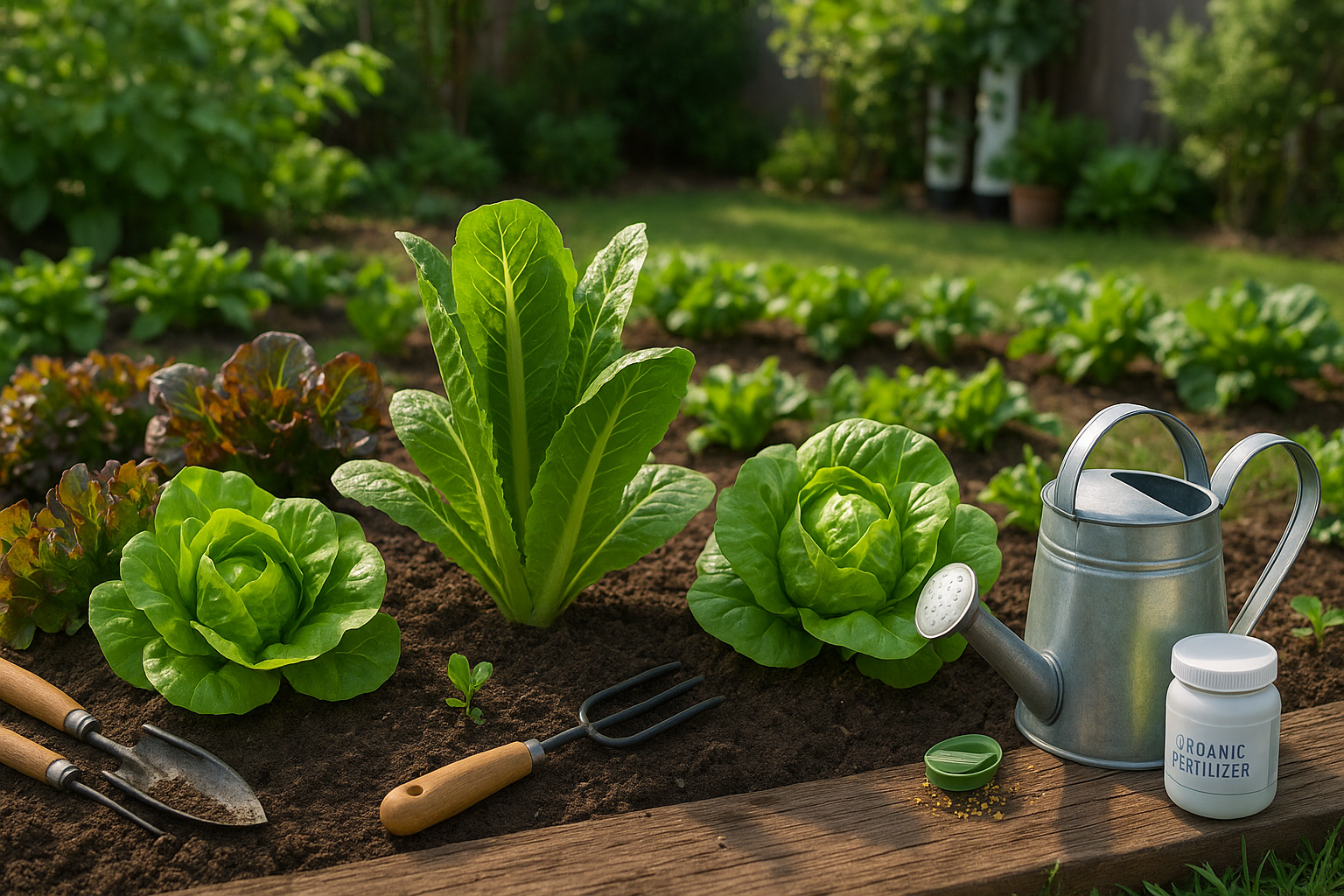Introduction
Understanding lettuce nutrient requirements is essential for growing crisp, healthy heads, whether you’re working with traditional garden soil or running a hydroponic setup on your kitchen counter. Lettuce is a fast-growing, leafy green that relies on the right balance of nutrients to develop tender leaves, robust color, and that signature fresh crunch we all love.
In both soil and hydroponics, missing any key nutrient can quickly lead to weak plants, pale leaves, or disappointing harvests. The good news? With a little know-how, you can supply exactly what your lettuce needs, ensuring growth that’s both vigorous and nutritious.
Whether you’re a home gardener eager for salads straight from the backyard or a hydroponic enthusiast experimenting indoors, mastering nutrient management is the secret to a successful crop. In this guide, we’ll break down what nutrients lettuce needs and share real-world tips for keeping your plants thriving.
Understanding Lettuce’s Essential Nutrients
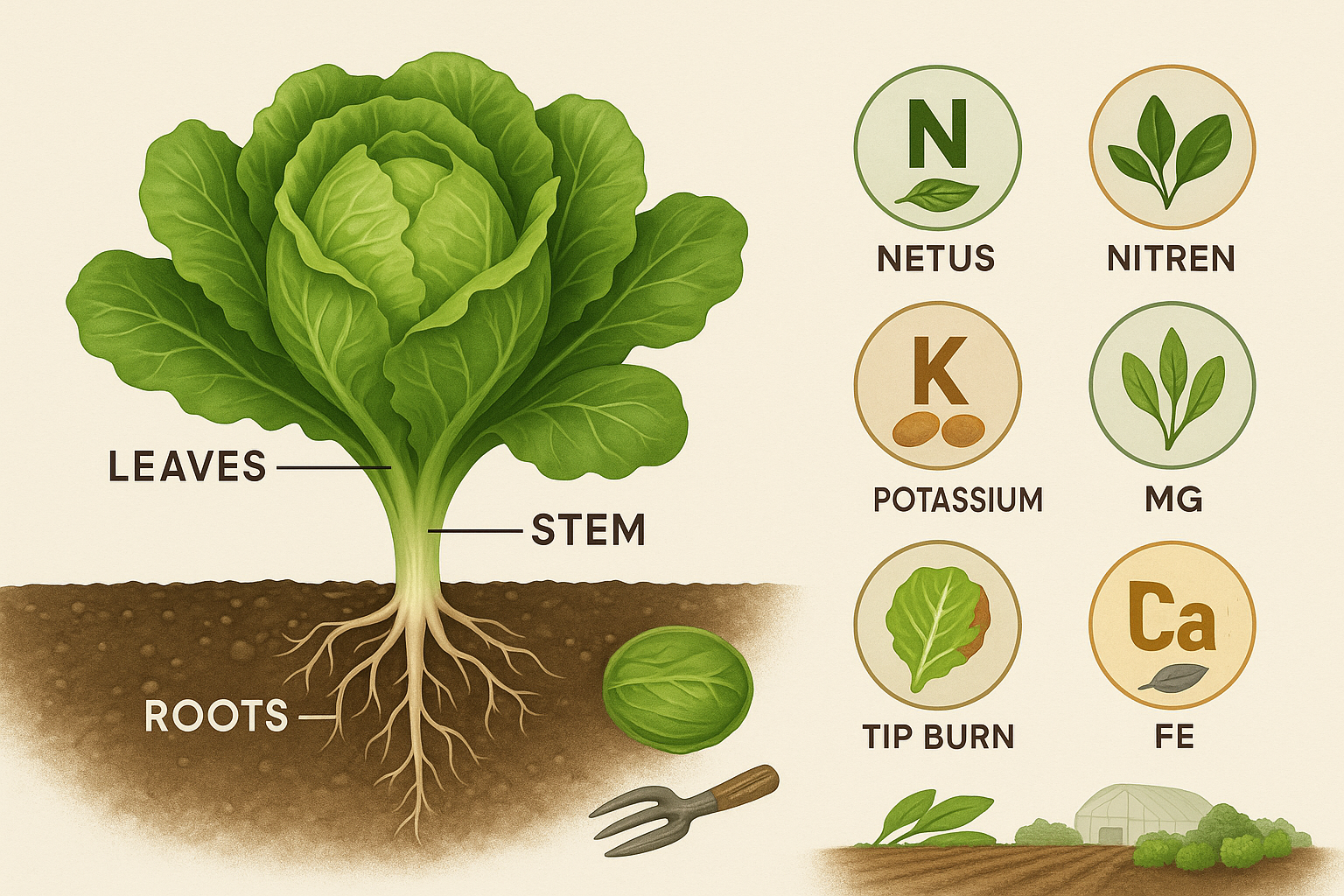
Lettuce may seem like a low-maintenance crop, but its health and flavor depend heavily on getting the right balance of nutrients. Key macronutrients—nitrogen, phosphorus, and potassium—form the backbone of healthy growth.
Nitrogen is vital for lush, green leaves; without it, lettuce often shows pale or yellowing foliage and experiences slow, stunted growth. Phosphorus supports root development, especially in seedlings, and a lack of it can cause leaves to turn a dull purplish color. Potassium is essential for strong overall plant health, helping with water regulation and disease resistance.
Aside from these major nutrients, lettuce also needs a range of micronutrients like magnesium, calcium, and iron.
- Magnesium is crucial for photosynthesis, so a shortage can lead to interveinal chlorosis—the yellowing of leaf areas between veins.
- Calcium strengthens cell walls, preventing issues like tip burn, where leaf edges become brown and crispy.
- Iron is essential for chlorophyll production, and its deficiency usually shows up as yellowing in young leaves while veins remain green.
Gardeners can avoid these problems by regularly adding balanced, complete fertilizers or organic compost, testing soil before planting, and observing plants weekly for subtle color changes or growth issues.
For urban gardeners using containers, slow-release fertilizers tailored for leafy greens provide consistent nutrition throughout the growing season.
Ultimately, maintaining balanced nutrition not only boosts lettuce yield but also enhances the vibrant flavor and crisp texture that make homegrown greens so satisfying.
Choosing the Right Fertilizer for Lettuce
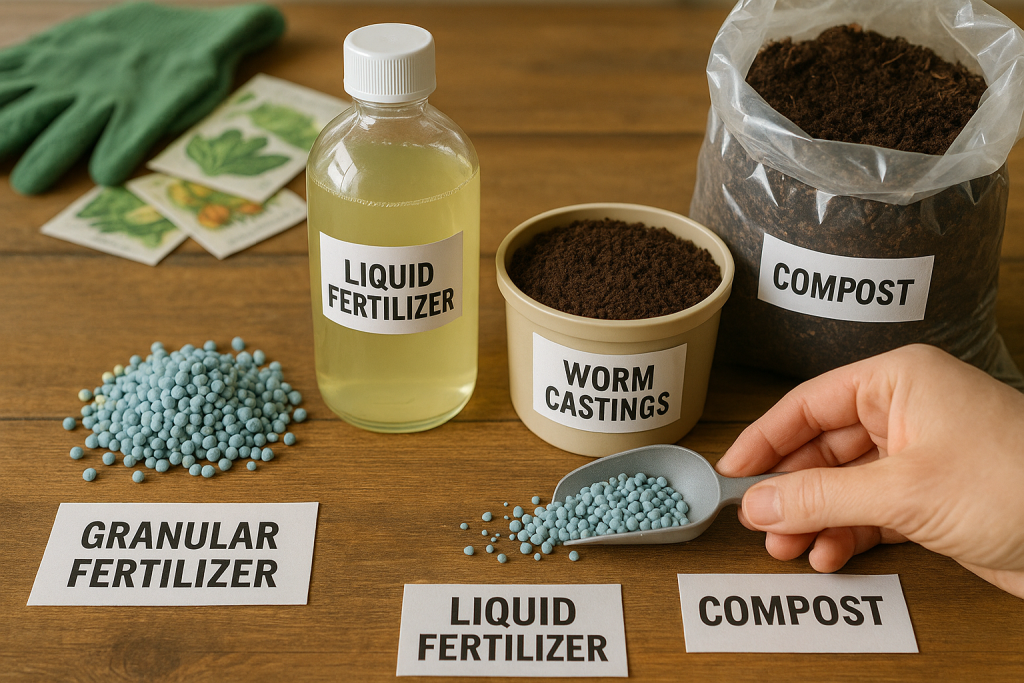
Selecting the best fertilizer for growing healthy lettuce starts with understanding the different types available—each offering unique benefits. Granular fertilizers release nutrients slowly and are ideal for outdoor beds, while liquid versions act quickly and suit container gardening or quick growth spurts.
Organic options, such as compost, fish emulsion, or worm castings, improve soil health by boosting microbial life, making them perfect for long-term garden sustainability. On the other hand, synthetic fertilizers provide an immediate nutrient punch—great if you need to fix deficiencies fast—but can sometimes lead to salt buildup or harm beneficial soil organisms over time.
If you’re growing lettuce in hydroponic systems, look for hydroponic-specific mixes designed to deliver balanced nutrition through water without soil.
For optimal lettuce development, focus on balanced N-P-K ratios:
- Early stages benefit from slightly higher nitrogen (such as 10-5-5) to promote leafy growth.
- As the plant matures, a balanced or slightly reduced nitrogen formula (like 5-5-5) is better to minimize bitter flavors and encourage compact heads.
Whatever you choose, remember to follow package instructions closely and feed little but often—overfertilizing can cause burnt tips or limp leaves. For most home gardeners, blending compost into the soil and supplementing with occasional liquid feed strikes a perfect, sustainable balance.
Monitoring and Adjusting Soil or Solution Conditions
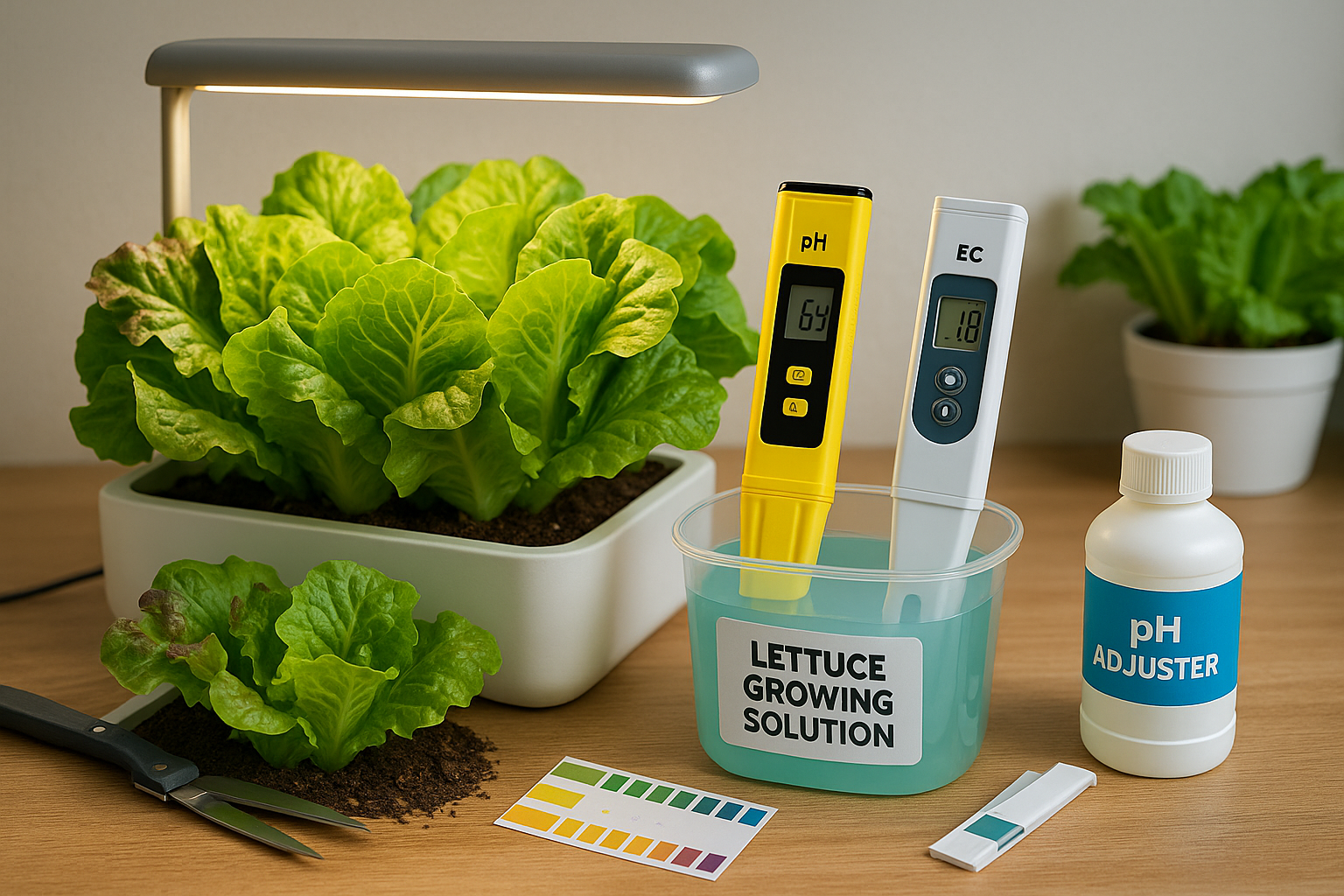
Keeping an eye on pH and electrical conductivity (EC) is crucial for lettuce growers because these factors directly impact how well your plants absorb nutrients. Lettuce thrives best when the pH is between 5.5 and 6.5—outside this range, important nutrients can become unavailable or overly concentrated, leading to poor growth or leaf discoloration.
Likewise, EC measures the nutrient strength in your soil or hydroponic solution; too high, and your plants can get ‘burned’ by excess salts, too low, and they might end up malnourished.
To monitor these conditions at home, you don’t need fancy lab equipment: simple pH test strips, digital pH pens, and EC meters are widely available at garden stores and online.
For soil, collect a small sample, mix it with distilled water, and test the solution using your pH or EC meter. For hydroponic or container systems, test the run-off or reservoir solution directly.
If your pH is too high (alkaline), adding a little white vinegar or a commercial pH-down solution can help; if it’s too low (acidic), garden lime or a commercial pH-up product can raise it.
Correcting EC is usually about adjusting the level of fertilizer: flush with fresh water if EC is too high, or add a well-mixed, diluted nutrient solution if EC is too low.
Check and adjust regularly, especially during changes in weather or plant growth stages, to keep your lettuce happy and healthy.
Supplying Nutrients in Different Systems (Soil vs. Hydroponics)
Lettuce plants need a steady supply of nutrients to thrive, whether grown in soil or hydroponic systems, but the way these nutrients are delivered is quite different.
In soil-based setups, lettuce gets most of its nutrients from the organic matter and minerals already present in the earth. Using high-quality organic compost is key: work it into the top few inches of soil before planting for a slow release of nitrogen, phosphorus, and potassium. Supplement with diluted fish emulsion or compost tea every two to three weeks for an extra boost. Apply these nutrients at the base of the plants, preferably early in the morning, and always water afterward to help the nutrients reach the roots.
By contrast, hydroponic lettuce relies entirely on water-soluble nutrient solutions since there’s no soil to provide minerals. Here, consistency is vital: mix a balanced hydroponic nutrient solution according to package instructions, and remember to refresh the reservoir every 7–14 days to prevent salt buildup and ensure the plants receive fresh nutrients. Check pH and electrical conductivity (EC) levels regularly, adjusting as needed—lettuce prefers a pH of 5.5–6.5. Many hydroponic growers opt for automatic timers or drip systems to provide a steady, controlled flow, but even simple hand-watering works if done daily and evenly.
Whether you’re using rich compost in a raised bed or carefully measured nutrients in a hydroponic reservoir, the goal is the same: consistent, targeted feeding to ensure crisp, healthy lettuce leaves.
Common Nutrient Problems and How to Fix Them
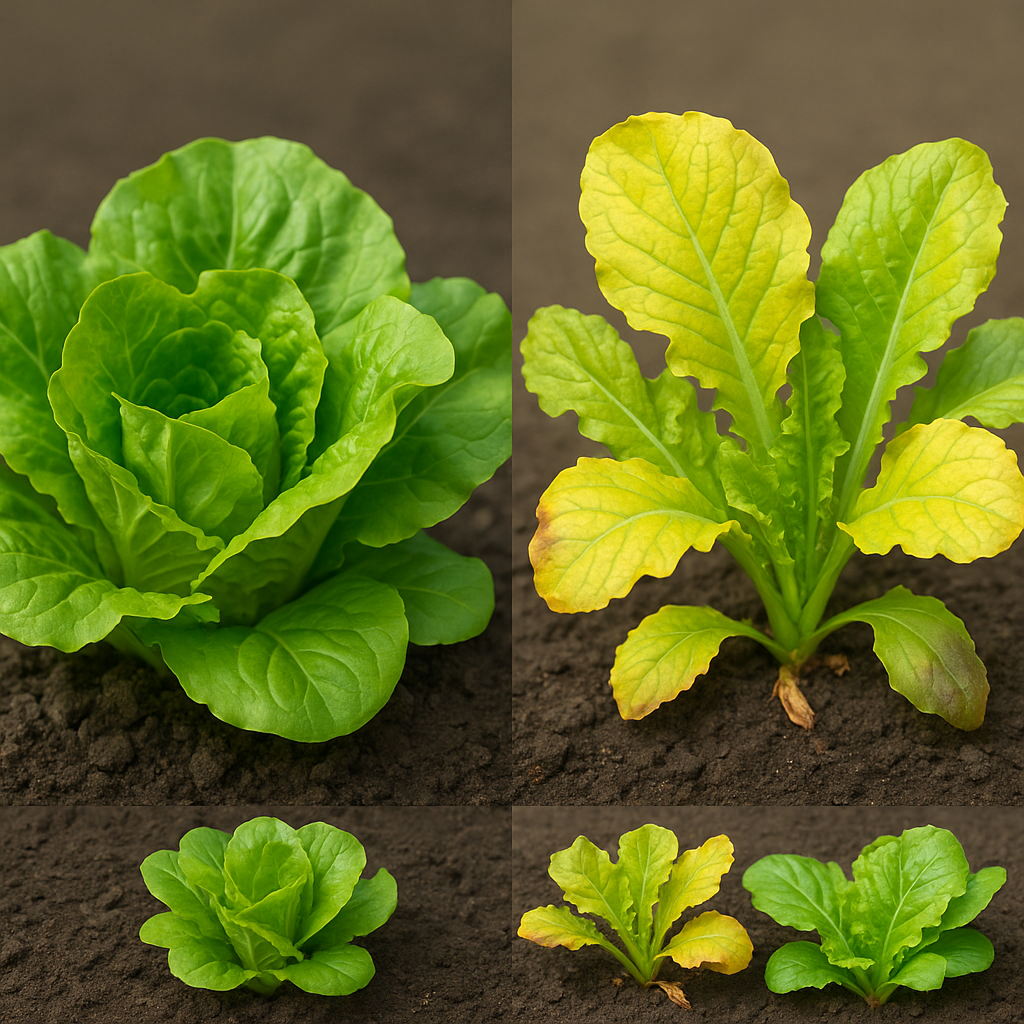
When growing healthy plants, nutrient problems can sneak up quickly, so spotting and fixing them early is crucial. Over-fertilization is common, especially for beginners eager to help plants grow faster. Signs include yellow or burnt leaf tips, crusty residue on the soil, and slowed growth. To fix this, flush the soil with clean water to wash out excess nutrients and hold off on feeding for a week or two.
Nutrient deficiencies, on the other hand, show up as faded, yellowing leaves (nitrogen), reddish stems (phosphorus), or curled older leaves (potassium). If you notice these symptoms, check your feeding schedules and consider adding a balanced fertilizer, starting with half the recommended dose until the plants recover.
Nutrient lockout can be trickier—it happens when nutrient buildup, pH imbalances, or salt deposits prevent roots from absorbing what they need, even if the nutrients are present. Plants with lockout often display multiple deficiency symptoms at once. First, check the soil’s pH (most plants prefer a range of 6.0–7.0) with an inexpensive soil pH kit; adjust as needed with amendments from your local garden center. Again, soil flushing can help reset the system.
Always observe plants closely and keep a grow journal to track changes—recording fertilizer types, doses, and plant responses will help you troubleshoot issues faster in the future. Remember, less can be more: start low and go slow with fertilizers, and always prioritize healthy soil and gentle, consistent care.
Conclusion & Quick Tips
Supplying nutrients to lettuce effectively starts with understanding its basic needs: nutrient-rich, well-draining soil, regular watering, and timely feeding. Begin with a balanced fertilizer or compost at planting, then provide additional nutrients—like nitrogen—for leafy growth as your plants mature.
Keep lettuce healthy by watering at the base to avoid fungal issues and mulching to retain soil moisture. Rotate your crop each season to prevent disease build-up. To avoid bolting, choose slow-bolt varieties and harvest leaves regularly.
For the best results, observe your plants closely: watch for signs of deficiencies such as yellowing leaves and adjust feeding accordingly. Don’t hesitate to experiment with organic teas or different fertilizer brands to find what works best in your garden.
By staying curious and responsive, you’ll develop skills not only for growing lettuce but also for successful gardening overall. Healthy lettuces come from attentive, adaptive gardeners!
